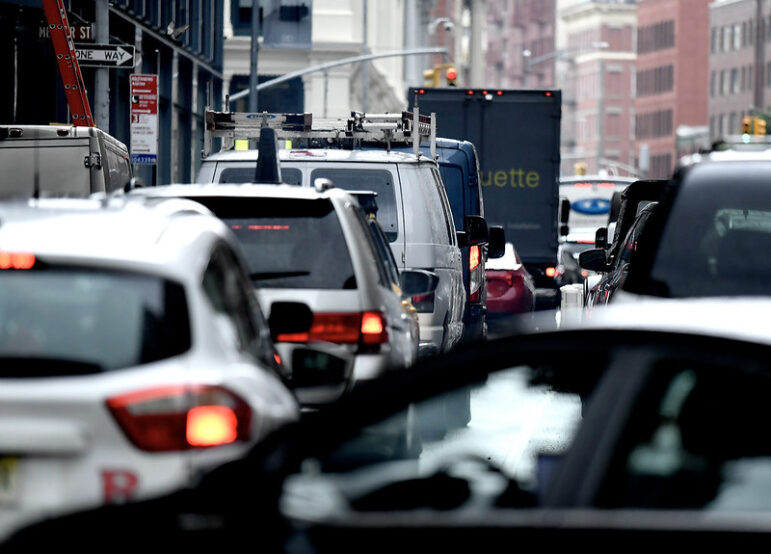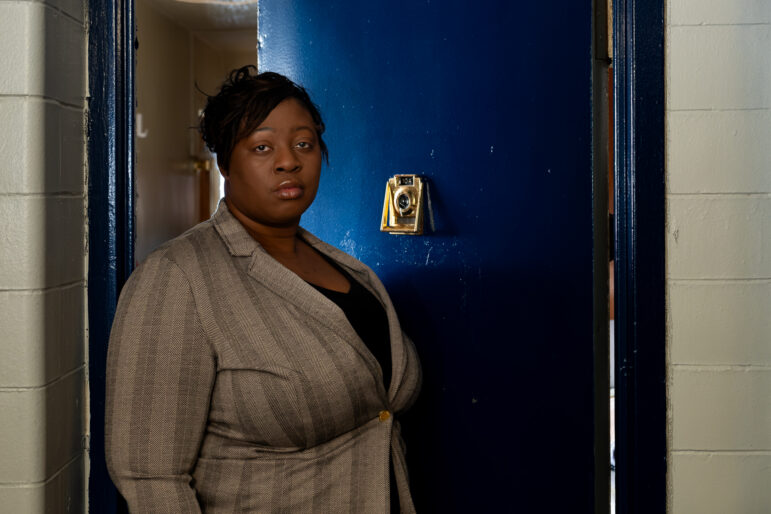
DCP
An illustration of how Floor Area Ratio works, from the City Planning zoning glossary. Some community groups believe FAR can be used to get more affordable housing out of the most ambitious developers.
As the deadline approaches for City Council to vote on the mayor’s proposed Mandatory Inclusionary Housing program, a group of over 60 community organizations called the Real Affordability For All Coalition is pushing the city to incorporate a tool they say will produce more affordable units, create well-paying jobs and give neighborhoods more flexibility to meet community needs.
It’s called the Floor Area Availability Bonus (FAAB), and it’s premised on the idea
that the city can take a more nuanced approach to giving away density.
In the city’s current proposal, whenever an area is rezoned in a way that would “facilitate the development of a substantial amount of new housing,” developers are required to make a portion of units affordable—either 25 percent of units to families making an average of 60 percent Area Median Income (AMI), or 30 percent of units to families making an average of 80 percent AMI. (In some circumstances, developers could provide 30 percent of units to families making 120 percent AMI.) It doesn’t matter how much density the new zoning allows: those three affordability options always stay the same.
FAAB would change this by requiring each neighborhood’s City Council representative and community board to set two levels of permissible densities. At the lower of these two densities, the Mandatory Inclusionary Housing requirements kick in: developers must provide 25 to 30 percent of units at affordable levels. Developers then have the choice to build to the higher level if they agree to more stringent regulations.
To get this voluntary bonus, RAFA says developers should make at least 50 percent of the units affordable and agree to provide state-certified apprenticeship programs, create safe and healthy workplaces, and abide by certain hiring requirements, including that 30 percent of the construction workforce consist of New York City residents. RAFA suggests it should be up to the neighborhoods themselves (through their Council member or community board) to decide the exact percentage and depth of required affordable units.
The FAAB proposal already faces challenges from city officials who say that adding labor requirements to zoning amendments is not legal, an argument RAFA disputes. In addition, city officials say tailoring mandatory inclusionary housing by neighborhood could be legally challenged on charges of exaction.
The big question, of course, is whether developers could ever be enticed to take the voluntary bonus. RAFA admits it will take higher densities before developers are willing to adopt it. Here’s some examples of how FAAB could fly or flop in neighborhoods targeted for a rezoning.
FAAB in East Harlem
The newly released East Harlem Neighborhood Plan, created by community organizations and the Council speaker’s office to guide the city’s plan for a future rezoning of the neighborhood, recommends using FAAB to produce more affordable housing along wide avenues.
1st, 2nd, and 3rd avenue are currently designated “R8A.” Under that designation,
developers can build 10 to 12 story apartment buildings with up to a 6.02 residential Floor Area Ratio (FAR). (FAR equals the total square feet of residential floor space divided by the total square feet of the lot. A higher FAR allows for higher, wider buildings. You can find information on that term and others in City Planning’s zoning glossary.)
The East Harlem Neighborhood Plan recommends that the city upzone these avenues to R9, which permits taller buildings with a higher FAR. Developers can get a voluntary bonus up to R10 if they agree to provide more affordable units.
FAAB in East New York
On Atlantic Avenue in East New York, there are several blocks designated M1-1. Buildings can only serve manufacturing uses, and the residential FAR is zero. City Planning has already proposed rezoning this area to R8A to promote residential construction.
Alternatively, with the FAAB program, the community board and local city council member would agree on two possible levels of density. For instance, the area might be upzoned to R7A, triggering the mandatory inclusionary housing requirements. If a developer wants a voluntary bonus from R7A to R8A, they must abide by additional affordability and labor requirements.
City Planning will likely argue that neither of these options applied in East New York—R7A, or R8A with additional affordability requirements—will be attractive to developers, and could result in no construction. According to the city’s cost analysis for the proposed mandatory inclusionary housing program, the lower option, an upzoning from M1-1 to R7A, could be profitable to developers in neighborhoods with strong housing markets. However, the bonus option would only be profitable to developers in very strong markets, when affordability is defined at 75 percent AMI, and when developers are receiving the assistance of tax credits or subsidies.
If, however, East New Yorkers can stomach raising the zoning as high as R10, they could propose a density bonus from R8A to R10, creating a more enticing offer for developers.








